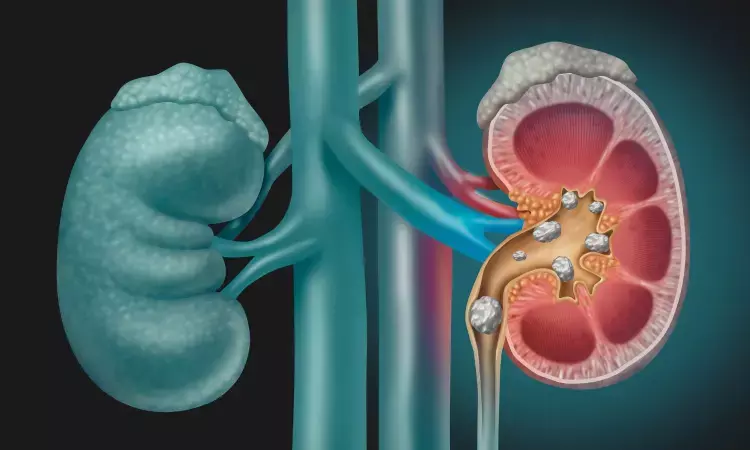- Home
- Medical news & Guidelines
- Anesthesiology
- Cardiology and CTVS
- Critical Care
- Dentistry
- Dermatology
- Diabetes and Endocrinology
- ENT
- Gastroenterology
- Medicine
- Nephrology
- Neurology
- Obstretics-Gynaecology
- Oncology
- Ophthalmology
- Orthopaedics
- Pediatrics-Neonatology
- Psychiatry
- Pulmonology
- Radiology
- Surgery
- Urology
- Laboratory Medicine
- Diet
- Nursing
- Paramedical
- Physiotherapy
- Health news
- Fact Check
- Bone Health Fact Check
- Brain Health Fact Check
- Cancer Related Fact Check
- Child Care Fact Check
- Dental and oral health fact check
- Diabetes and metabolic health fact check
- Diet and Nutrition Fact Check
- Eye and ENT Care Fact Check
- Fitness fact check
- Gut health fact check
- Heart health fact check
- Kidney health fact check
- Medical education fact check
- Men's health fact check
- Respiratory fact check
- Skin and hair care fact check
- Vaccine and Immunization fact check
- Women's health fact check
- AYUSH
- State News
- Andaman and Nicobar Islands
- Andhra Pradesh
- Arunachal Pradesh
- Assam
- Bihar
- Chandigarh
- Chattisgarh
- Dadra and Nagar Haveli
- Daman and Diu
- Delhi
- Goa
- Gujarat
- Haryana
- Himachal Pradesh
- Jammu & Kashmir
- Jharkhand
- Karnataka
- Kerala
- Ladakh
- Lakshadweep
- Madhya Pradesh
- Maharashtra
- Manipur
- Meghalaya
- Mizoram
- Nagaland
- Odisha
- Puducherry
- Punjab
- Rajasthan
- Sikkim
- Tamil Nadu
- Telangana
- Tripura
- Uttar Pradesh
- Uttrakhand
- West Bengal
- Medical Education
- Industry
Enzyme-Loaded Magnetic Robots Offer Promising Noninvasive Solution for Kidney Stone Treatment: Study Shows

Canada: A groundbreaking study published in Advanced Healthcare Materials introduces an innovative, noninvasive method for dissolving kidney stones using tiny, soft magnetic robots. Developed by Afarin Khabbazian and her team from the Department of Mechanical Engineering at the University of Waterloo, Canada, this research presents a potential alternative to traditional kidney stone treatments, which often rely on long-term medication or repeated surgeries.
Kidney stones affect roughly 12% of the population and are known for their painful recurrence and the limitations of current treatment options. Persistent drug therapy and surgical procedures place a significant burden on both patients and healthcare systems. To address these challenges, the researchers have designed a wireless, targeted approach using tetherless miniature robots that deliver treatment directly to the stone site.
These flexible robots are crafted from millimeter-scale gelatin-based polymer strips embedded with micromagnets and loaded with urease, an enzyme that breaks down urea to increase urinary pH. By raising the pH, the local environment becomes more conducive to dissolving uric acid kidney stones. The robots are magnetically guided through the urinary tract and can be tracked in real-time using a clinical ultrasound system.
In laboratory testing using a 3D-printed model of the human urinary tract, the robots successfully navigated different regions and demonstrated a significant ability to reduce kidney stone mass. Within just five days, the robots achieved a 30% reduction in uric acid stone mass using a urease concentration of 5 mg/mL—double the rate seen under control conditions. This performance suggests that full stone dissolution may not be necessary, as smaller fragments under 4 mm can typically pass through the urinary system naturally.
One of the key advantages of this system is its minimal invasiveness. The soft, flexible design of the 1 mm-thick filaments allows them to travel through the ureter, bladder, and urethra without requiring surgical procedures. An external magnetic patch may be used to hold the robots in the renal pelvis, enabling continuous, localized treatment over extended periods.
The study also highlights the potential for multifunctionality. These robots could be adapted to carry additional therapeutic agents such as antibiotics, pain relievers, or anti-inflammatory drugs. Future research will focus on enhancing safety, including toxicity assessments of the nickel-coated micromagnets and testing under more realistic physiological conditions such as urine flow and ureteral motion.
This novel approach offers a glimpse into the future of urinary tract interventions, paving the way for more precise, noninvasive treatments. The researchers are optimistic that with further development, this magnetic robot system could transform how uric acid kidney stones—and possibly other urinary conditions—are managed in clinical settings.
Reference:
Khabbazian A, Kwong L, Lewis A, Liu E, Abdelrazec N, Bakenecker AC, Fontanals N, Lopez G, Sánchez S, Lopez JM, Carrillo B, Farcas M, Kallweit C, Yu ACH, Behrad Khamesee M, Magdanz V. Kidney Stone Dissolution By Tetherless, Enzyme-Loaded, Soft Magnetic Miniature Robots. Adv Healthc Mater. 2025 Jul 1:e2403423. doi: 10.1002/adhm.202403423. Epub ahead of print. PMID: 40589273.
Dr Kamal Kant Kohli-MBBS, DTCD- a chest specialist with more than 30 years of practice and a flair for writing clinical articles, Dr Kamal Kant Kohli joined Medical Dialogues as a Chief Editor of Medical News. Besides writing articles, as an editor, he proofreads and verifies all the medical content published on Medical Dialogues including those coming from journals, studies,medical conferences,guidelines etc. Email: drkohli@medicaldialogues.in. Contact no. 011-43720751


